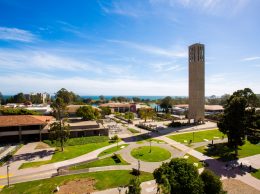UCSB’s Nakamura adds Queen Elizabeth Prize to his Nobel
IN THIS ARTICLE
- Energy Topic
- Staff Report Author
By Staff Report Wednesday, February 3rd, 2021
Shuji Nakamura, a professor of materials and electrical and computer engineering at UC Santa Barbara, is one of the recipients of the 2021 Queen Elizabeth Prize for Engineering, or QEPrize.
The five recipients are all pioneers in the field of light-emitting diodes, or LED lighting. Nakamura began developing LED technology while a researcher in Japan in the 1980s and won a Nobel Prize in Physics for his work in 2014. He has been a UCSB professor since 2000.
The QEPrize comes with 1 million pounds, or around $1.4 million, and is awarded every two years by the Queen Elizabeth Prize for Engineering Foundation. Past winners include pioneers in the development of the internet and world wide web, digital imaging sensors, global positions systems and large molecule drug delivery.
In its statement announcing the prize, the Queen Elizabeth Prize for Engineering Foundation said the development of LED lighting “forms the basis of all solid-state lighting and technology.” The winners, the foundation said, are being recognized “not only for the global impact of LED and solid-state lighting but also for the tremendous contribution the technology has made, and will continue to make, to reducing energy consumption and addressing climate change.”
LED lighting has been the main force behind a huge reduction in energy consumed by lighting. The U.S. Department of Energy estimates that by 2030 our energy consumption for lighting will have decreased by more than 40%, the equivalent of more than 50 power plants worth of output, according to a UCSB news release.
“Our campus is overjoyed that Professor Nakamura, along with four other colleagues, has received this international prize that is among the top engineering awards in the world, recognizing their transformational innovation that is of monumental benefit to humankind,” UCSB Chancellor Henry Yang said in the release. “Their invention of visible LEDs has enabled energy-efficient solid state lighting, which is the largest improvement in lighting efficiency in more than 100 years.”










